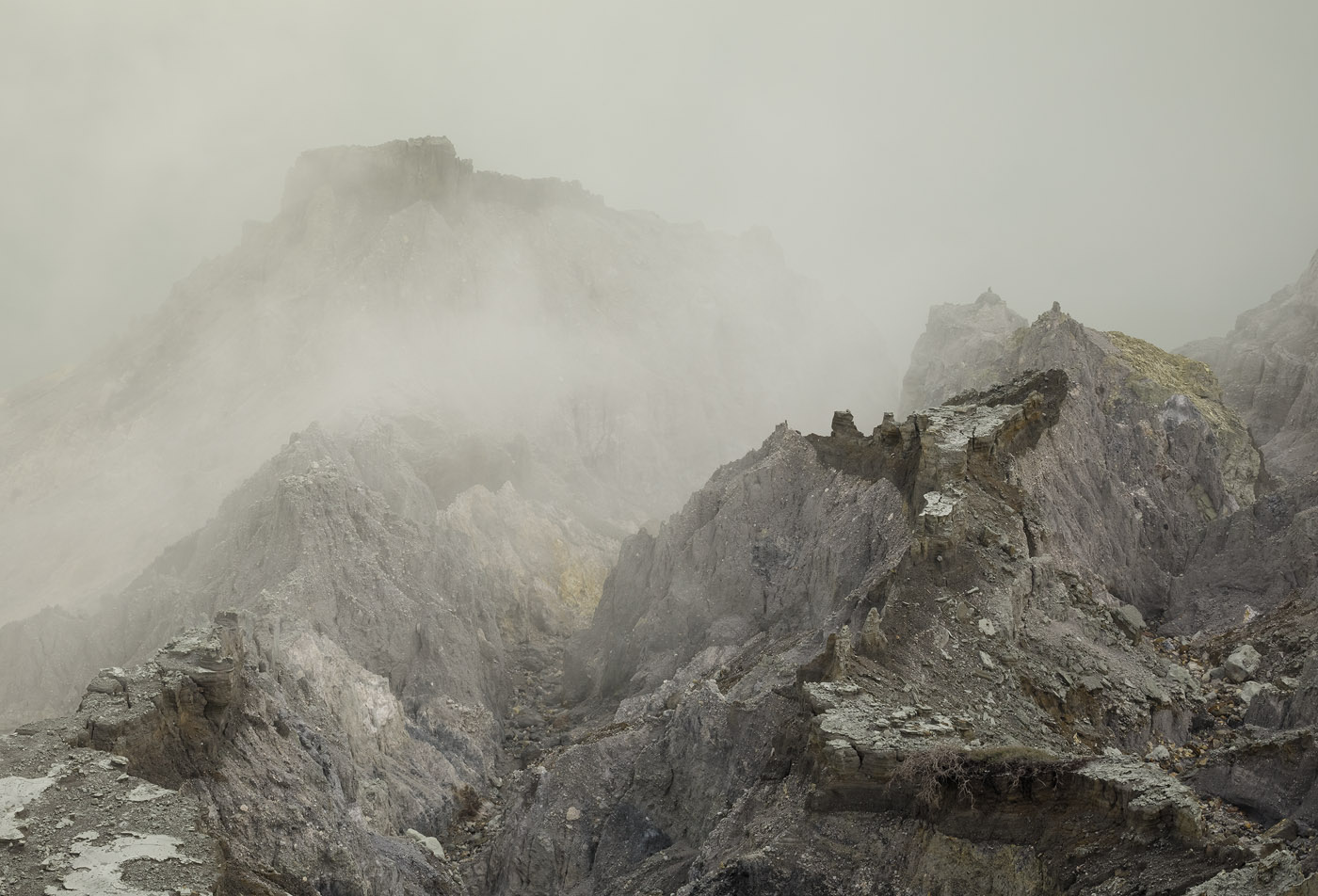Erez Marom Photography
Demon of the Deep: Shooting Kawah Ijen Volcano
Posted on 16th January, 2020 - Back to Blog Listings
In early 2019 I had a fantastic trip to South East Asia. After 13 years without setting foot there (a bit of a frightening number – the last time was before I ever held a DSLR!), I was getting a serious itch that had to be scratched. I was craving the feel of Asia, its food, wildlife and landscapes. When I found the right partner to join me, I jumped on the opportunity and booked my flights. While this wasn't purely a shooting trip (I also spent time in Malaysia, Singapore and Hong Kong without shooting), two weeks of it were shooting-oriented. I spent a week photographing orangutans in Northern Sumatra, but the experience I want to share here is shooting the well-known East Java volcano of Kawah Ijen.
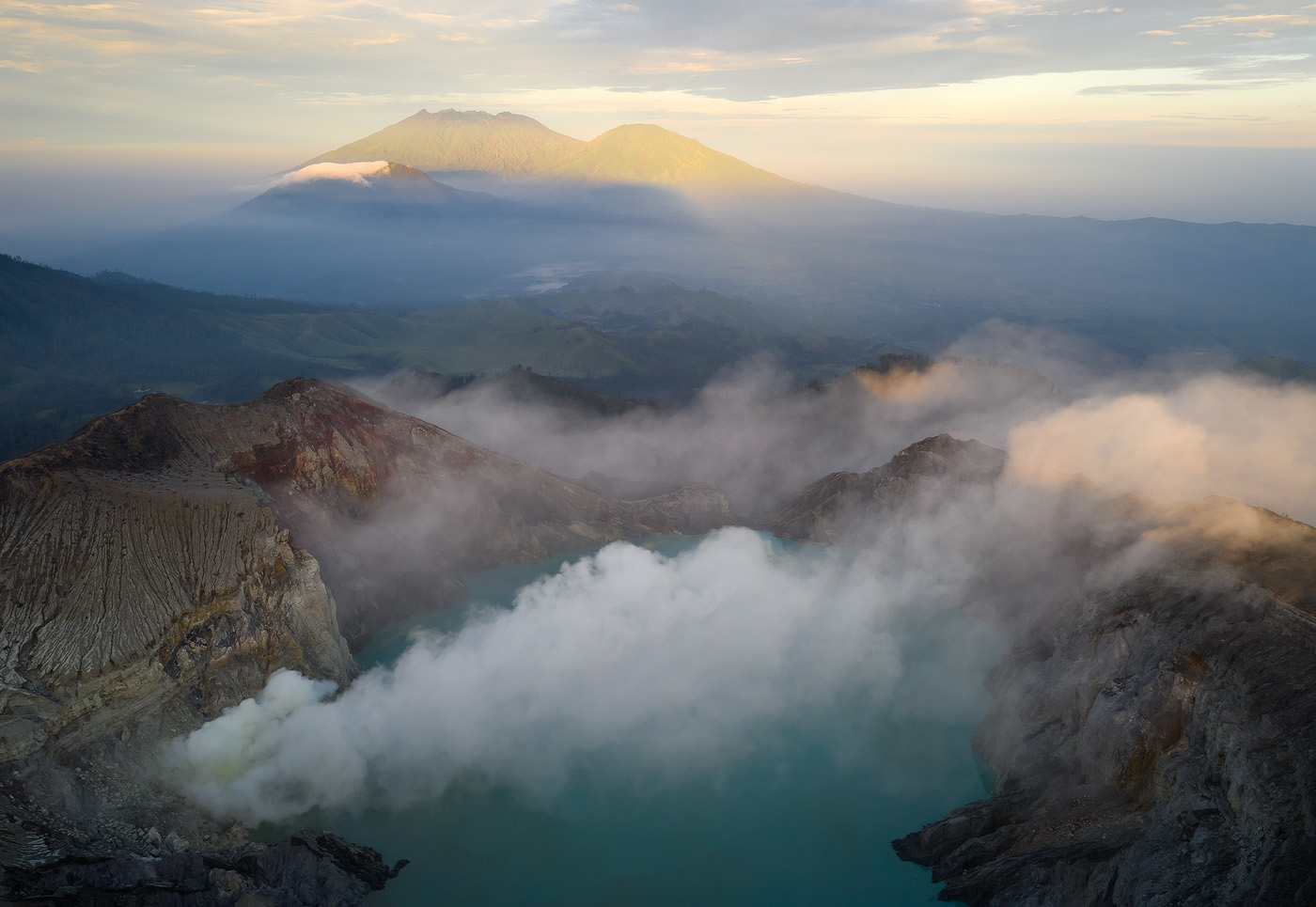
Kawah Ijen (Ijen crater) was one of the icons I had long wanted to visit and shoot. As a volcano enthusiast and keen shooter, there was no chance I was going to pass on this special place. Part of a larger group of composite volcanoes located in the far east of the island of Java, it is one of the main attractions of the island and draws much tourism. Ijen is extremely photogenic and tells several stories worth exploring. It's also the site of intensive sulfur mining, wherein miners extract elemental sulfur solidified from gases bursting out of an active vent in the crater. The miners then carry the sulfur by hand in baskets that can weigh up to 90kg (about 200lb), up to the crater rim and 3km / 1.9mi down the mountain up to a weighing station, where they get paid for the load.
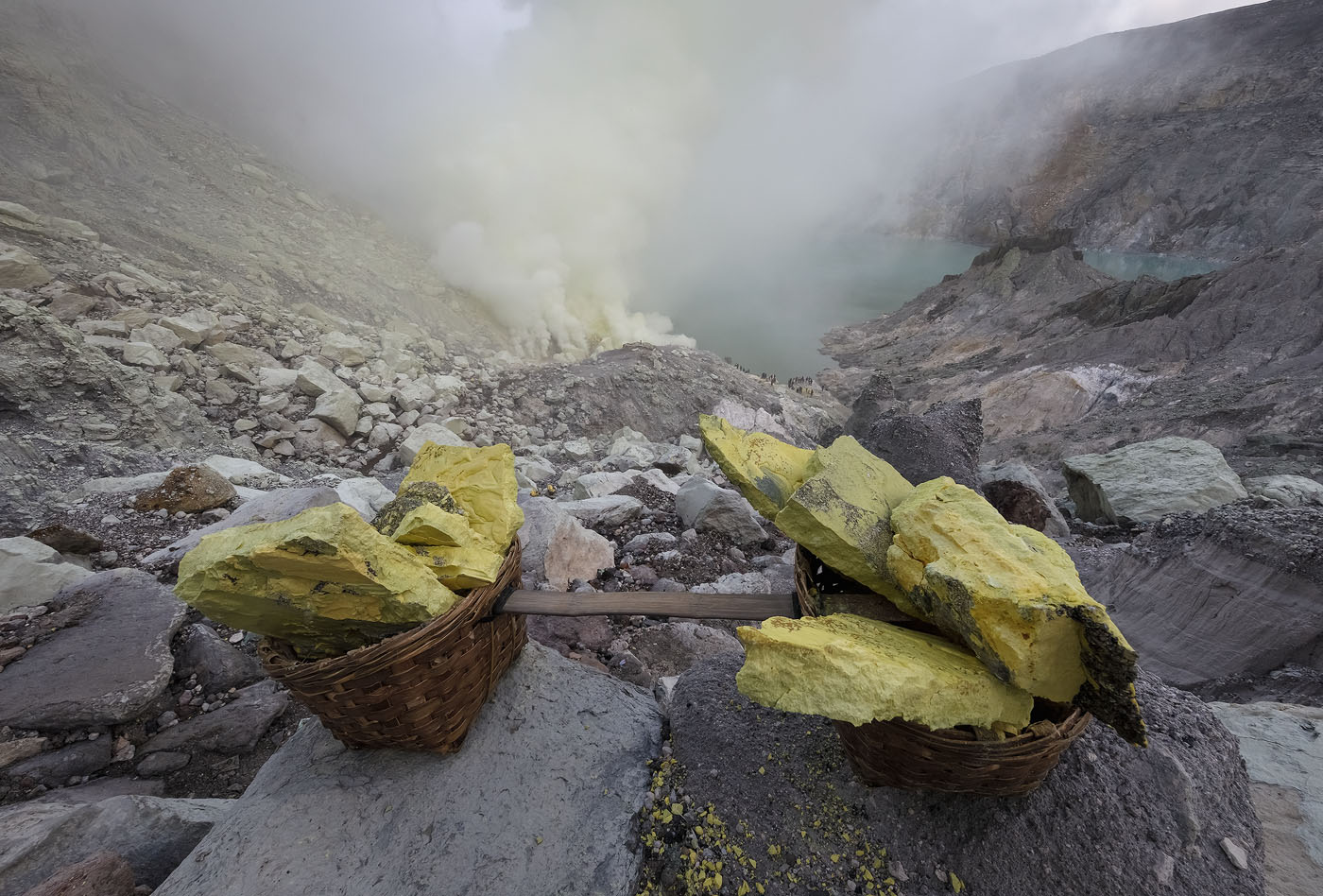
While the miners' story is indeed fascinating (and controversial due to the health hazards, even though the work is comparatively well paid), I'm a nature photographer, and I came to shoot the natural features of the volcano. Ijen is very well known for the colors of the ignited sulfuric gasses in the mined vent, and also for the turquoise color of its crater lake. I spent two days hiking up the volcano and shooting it, and I'd like to share the experience.
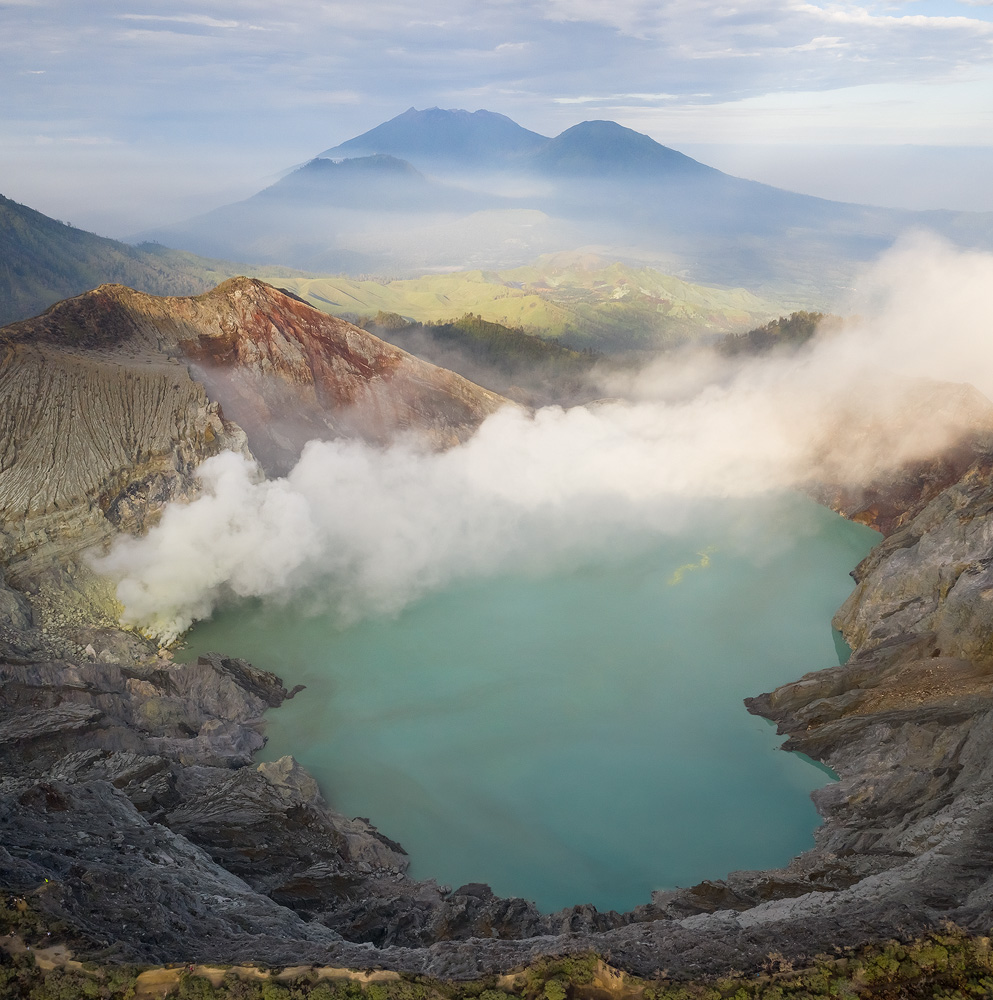
While not very difficult, hiking Ijen is quite physical. To get to the crater in time and maximize your photography, you need to start the journey at about midnight. This gives you time to locate a porter should you need one (I suffer from minor shoulder and knee problems and so was happy to support the local economy and hire a porter to carry my heavy photo bag), and be ready for the opening of the gate at 1 a.m. – and you had better be early rather than late. On the first hike I headed up at 2:30 a.m., the and trail was jam packed with tourists, which made it much harder to hike in my own pace. I didn't make the same mistake again the second time around.
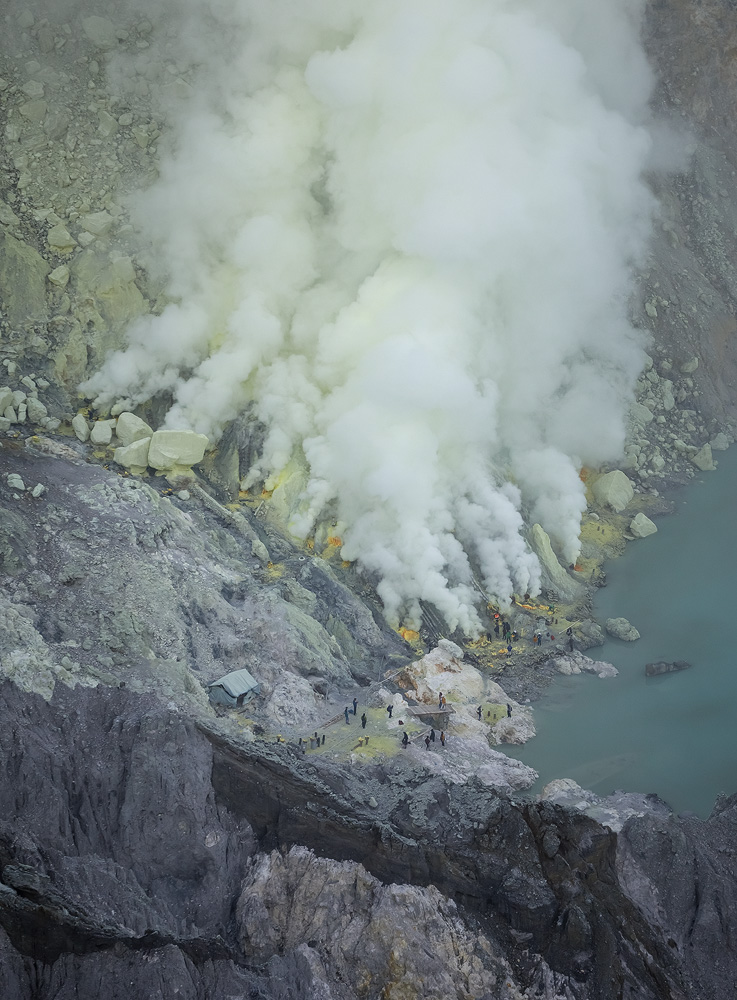
The hike up to the crater rim took me 1.5 hours the first night, when I was tired from the travel and had to make my way through other hikers. The second time, without anybody hiking beside me other than my travel partner, guide and porters, I was well rested and Red-Bulled, and made the way up in less than an hour. Once up the crater rim, a trail goes down to the mining vent, and hiking it also depends highly on how many people are there. A good estimate would be 45 minutes with people around, half an hour without if you're early.
Going down into the crater is more technical than going up and one should be very careful when doing it. In general, remember to always do the hike with a certified guide, as an experienced guide will make sure you stay safe and protected from the elements, especially when smoke gets thick inside the crater.
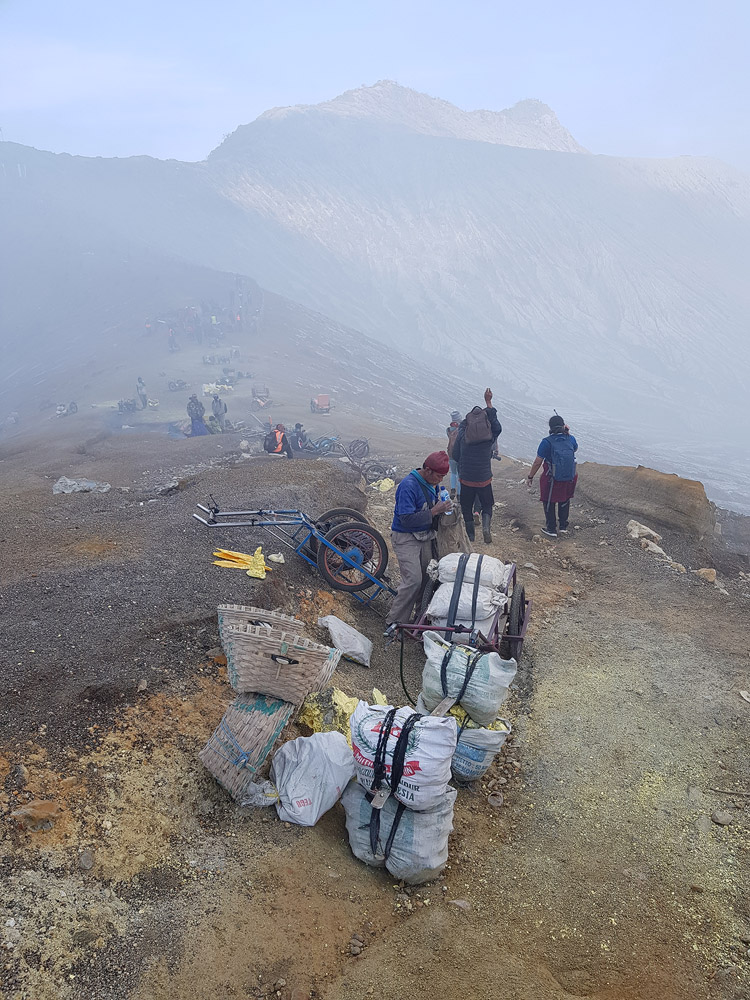
Near the end of the hike up, I had to put my respirator on. The sulfur smell was getting overwhelming, and I knew it was time to protect myself against the noxious gasses. Soon after starting the hike down to the vent, I felt the sting in my eyes telling me to put my goggles on. Both respirator and goggles were absolutely essential to be able to function when inside the crater. Closer to the vent, even they were not enough to prevent me from tearing when the wind carried the sulfuric gasses my way.
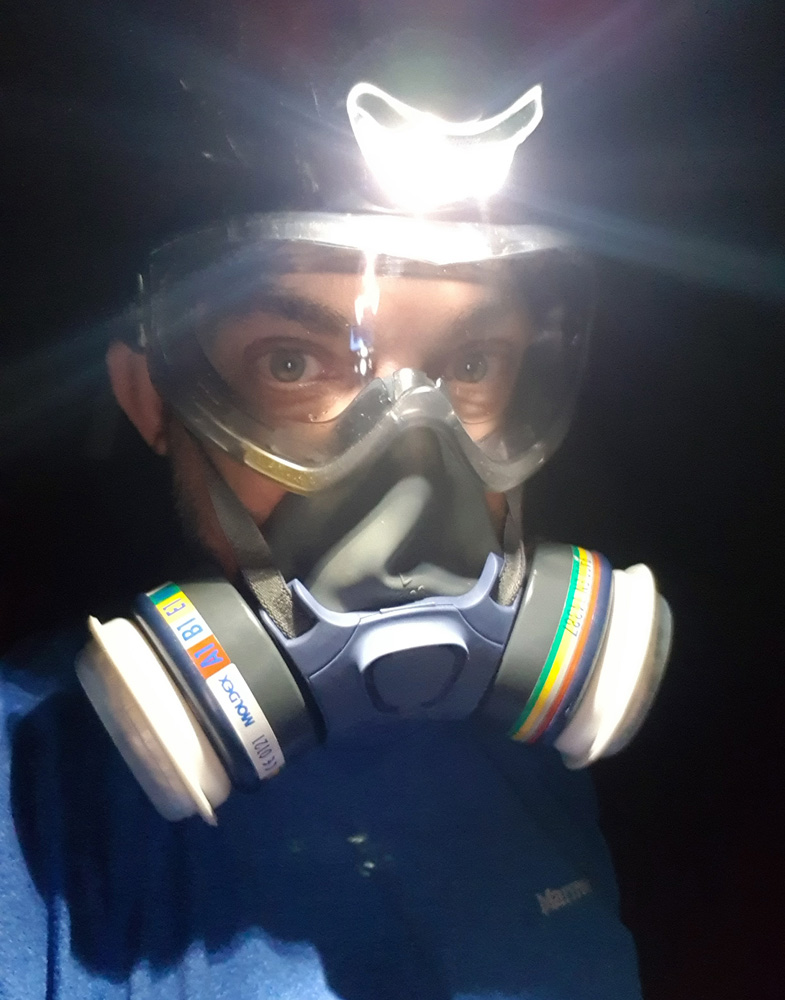
So there I was, in the dead of night, watching the purple fire of ignited sulfuric gasses. This was astonishing to behold, but quite challenging to capture. As you might imagine, shooting at night required high ISO, and in order to get any detail in the fire, an ISO of at least 3200 was needed. I ended up using ISO 6400 most of the time.
Focusing was also very difficult. Naturally I had to focus manually, as usual by enlarging part of the image on live-view and turning the focus ring to get good sharpness, but the fire is so dynamic, and so often covered by smoke, that it took me several minutes to be able to focus. The goggles filling up with water from my breath sure didn't help.
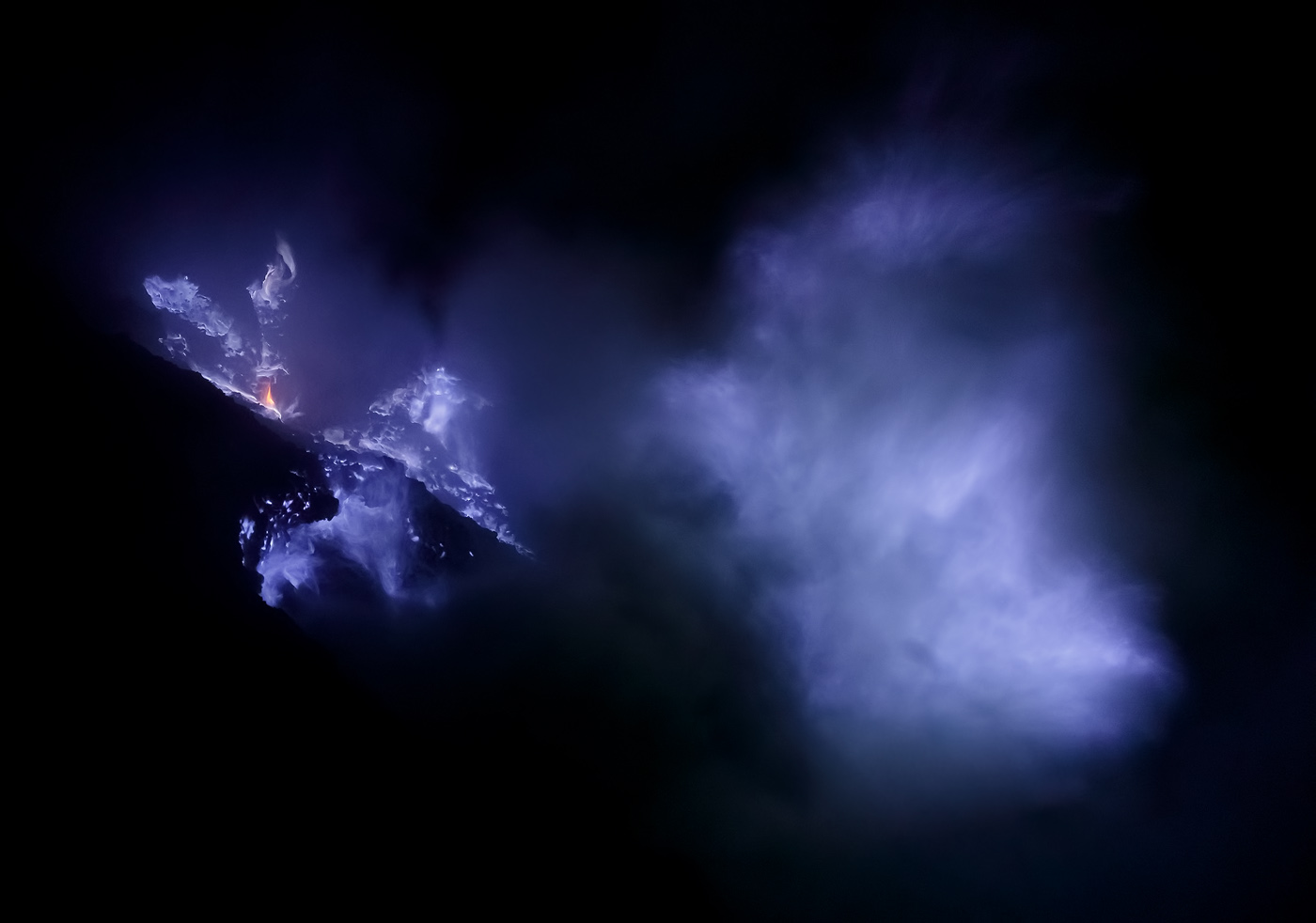
Once I got my focusing sorted out, it was time to compose. Composing a rapidly-changing fire that is covered by smoke 90% of the time and ruined by the flash of other people's cellphone cameras 80% of the remaining time was frustrating. I found myself struggling through my tears just to find some sort of balance. Two nights of shooting the fire only yielded 2-3 good shots. While indeed I didn't need more than that for my portfolio, I wish it had been an easier ordeal and that I had gotten a bigger selection.
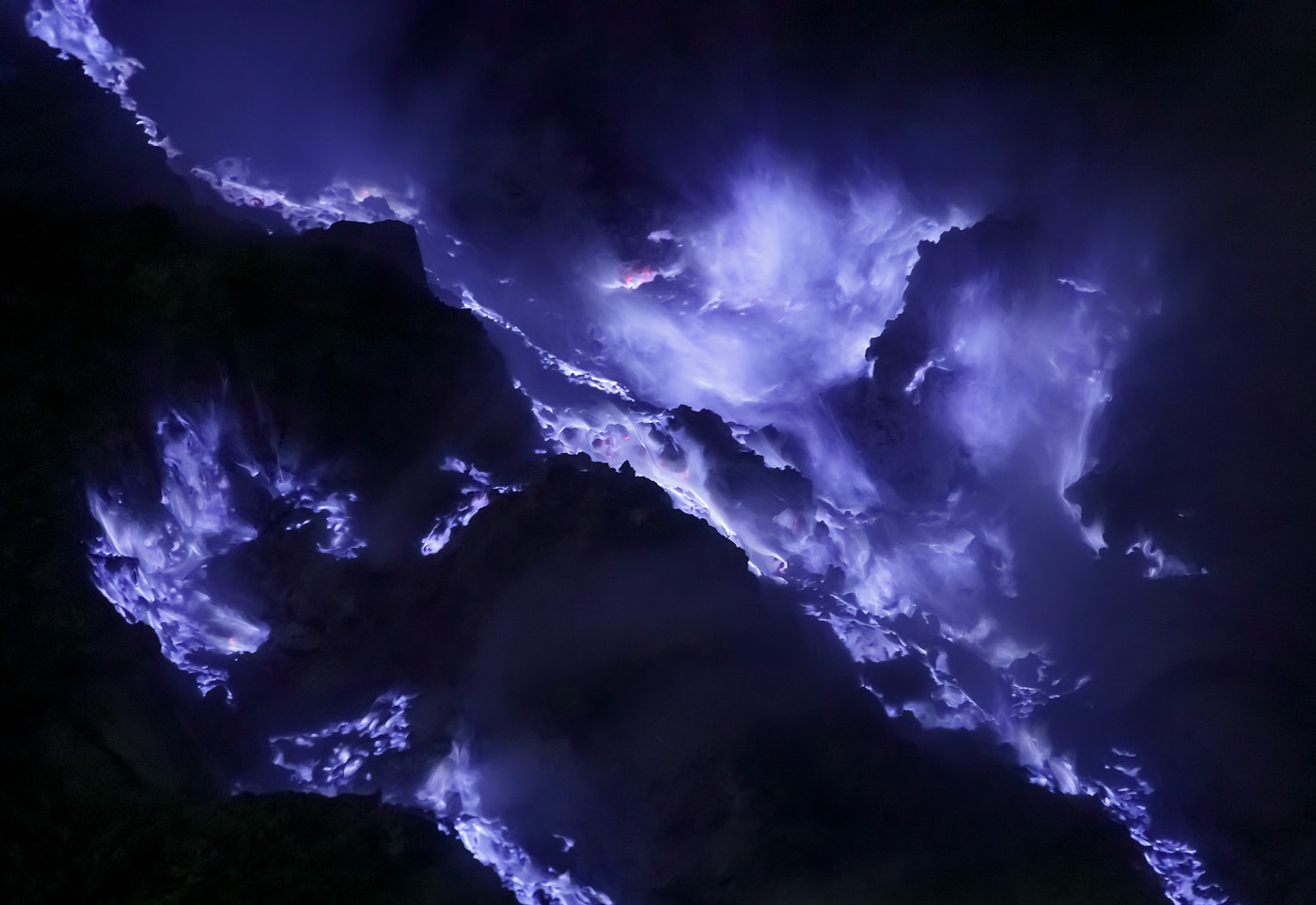
After shooting the fiery vent I headed back up to the crater rim for sunrise. Ijen boasts a 1-km wide crater lake, which is recognized for being the largest highly acidic crater lake in the world. The lake's colors are truly beautiful: an almost-unnatural turquoise lined with yellow streaks of sulfur.
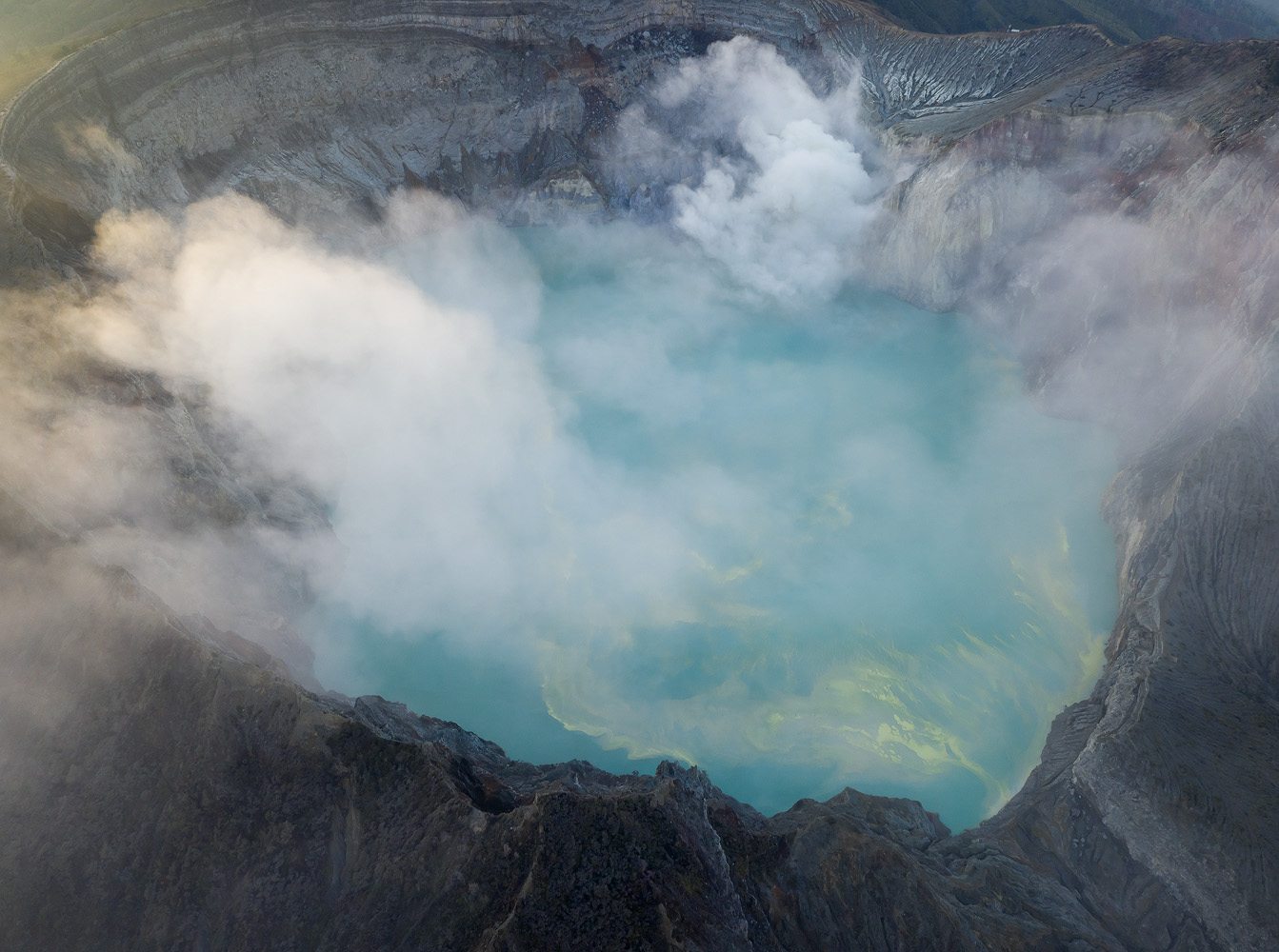
While it is possible to shoot the lake from the crater rim, I found that using a drone was much more productive, and allowed me to include the entire crater in the image, in addition to the several other volcanoes around Ijen.
I had some fun trying abstract photography with the drone, as I flew it close to the crater lake. Especially nice was flying the drone through the sulfuric gasses, which create an eerie haze. Aerials can also reveal another visually interesting element of the area: the contrast between the toxic environment inside Ijen and the lush forests around it.
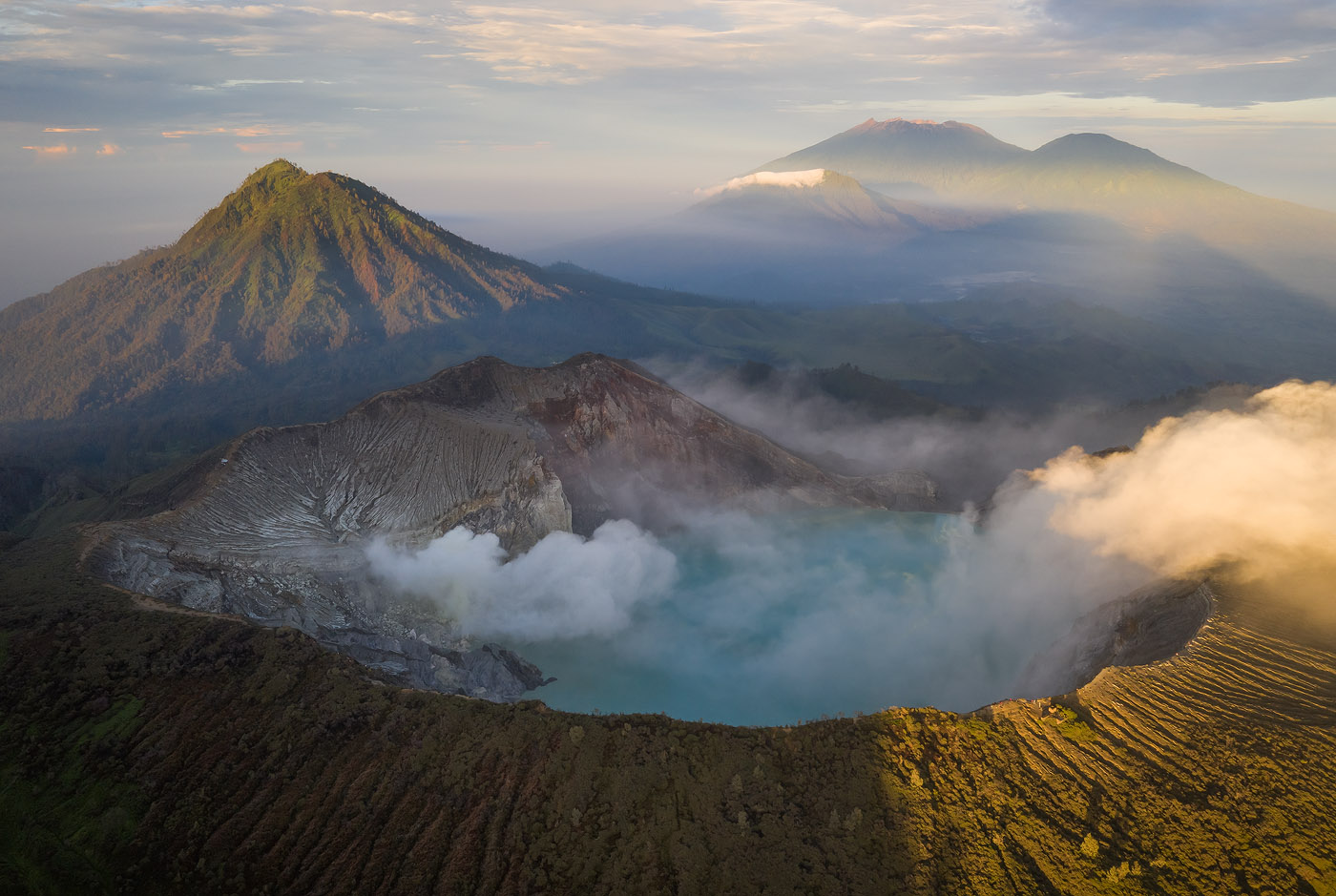
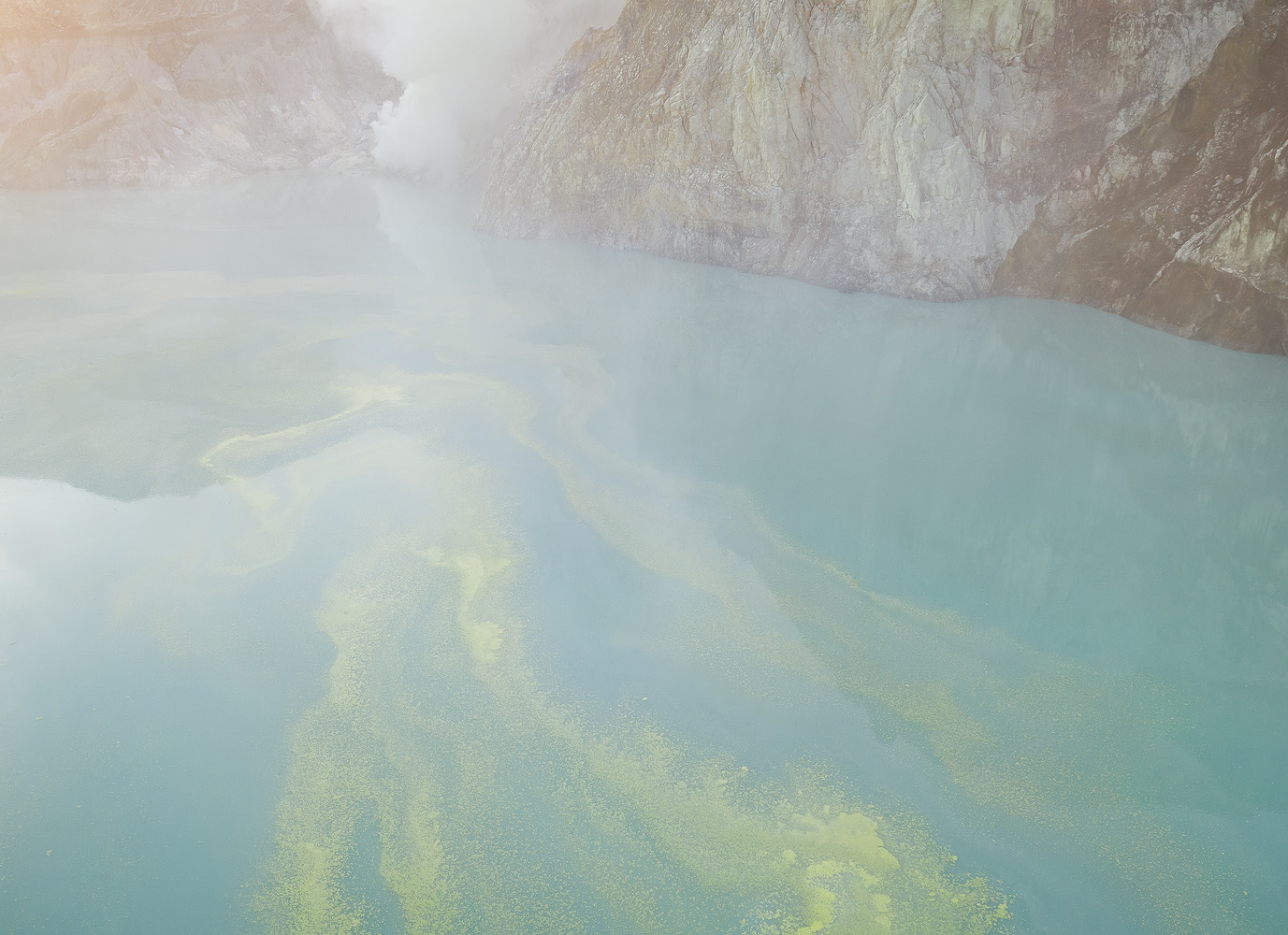
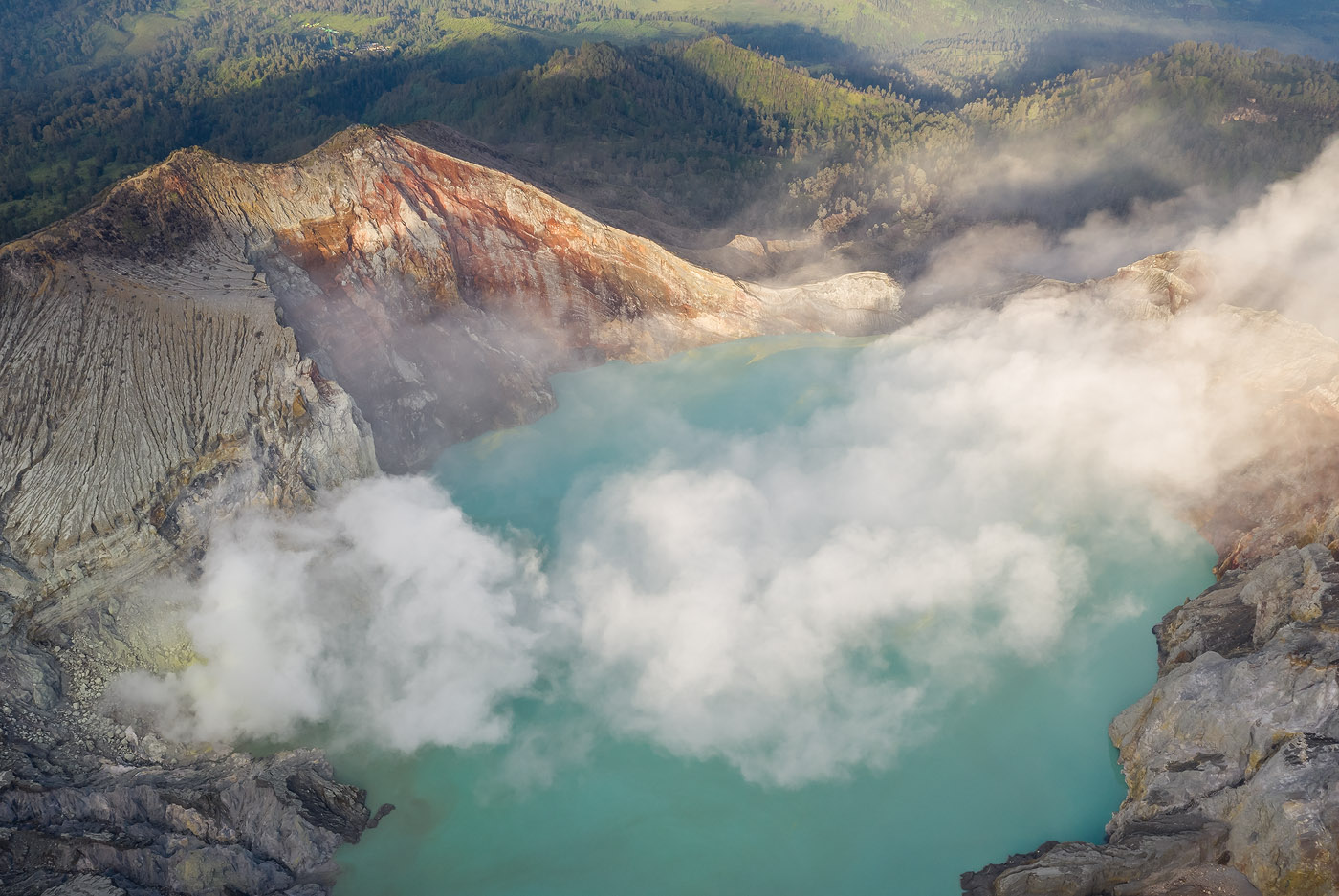
Kawah Ijen didn't disappoint; I highly recommend traveling there and witnessing it for yourself. Whether shooting the miners or nature, from the ground or from the air, it holds a special kind of beauty and tons of photographic potential. Just make sure you have a good guide, and a respirator and goggles at hand.
